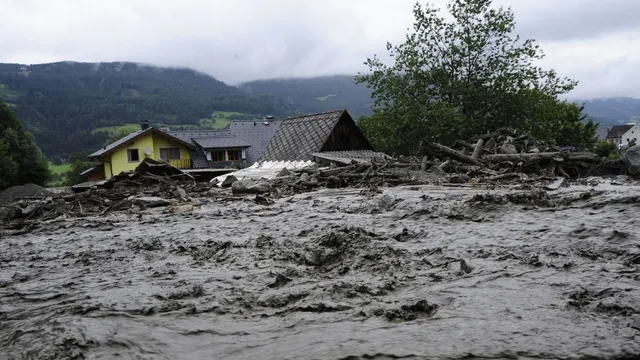- By Shivangi Sharma
- Tue, 26 Aug 2025 06:18 PM (IST)
- Source:JND
Sea levels are rising at an alarming rate. According to the National Oceanic and Atmospheric Administration (NOAA), the pace has more than doubled in recent decades, from 0.06 inch (1.4 mm) annually throughout most of the 20th century to 0.14 inch (3.6 mm) per year between 2006 and 2015. Projections are grim: NOAA predicts at least a 1-foot (0.3 m) rise by 2100, while the UN Intergovernmental Panel on Climate Change estimates between 16 and 25 inches (40–63 cm).
The Pacific islands face some of the harshest realities of rising seas. Nearly 3 million islanders live within 10 km of the coast, placing them at extreme risk of displacement before the century’s end, according to the Science and Development Network. Entire communities may be forced to relocate, threatening cultural survival alongside physical safety.
The Himalayan Meltdown
It is not just islands at risk, mountains too are melting. The Himalayas have witnessed alarming ice loss. In June 2024, the Sutri Dhaka Glacier lost nearly 50 per cent of its ice depth, while Mount Everest’s snow cover shrank by 150 meters. Melting glaciers are forming unstable lakes that could burst, triggering Glacial Lake Outburst Floods (GLOFs). These floods can travel over 120 km, sweeping away everything in their path and endangering 15 million downstream residents across Nepal, India, Pakistan, Peru, and China.
Coastal Cities Under Threat
Globally, around 10 per cent of the world’s population, nearly 790 million people, live along coastlines. Many of the world’s largest cities, including New York, Mumbai, Miami, Shanghai, and Bangkok, face rising waters. According to climate researcher Nash, two-thirds of cities with more than 5 million residents are in vulnerable coastal areas. For example, Jakarta, home to 10 million people, is sinking so fast it is projected to be entirely underwater by 2050.
Struggles And Responses
Responses vary dramatically. Some governments are taking bold measures, while others lag behind. Jakarta is building a USD 40 billion sea wall and even relocating its capital to Borneo. In contrast, Bangkok has been criticised for failing to act decisively, despite scientists' warnings of severe risks. Wealthy cities like Miami and New York are investing in coastal defences, but experts fear it may not be enough to counter future disasters.
A Race Against Time
Whether communities survive the rising tides depends largely on political will, funding, and timely action. Nations that invest in resilient infrastructure and early adaptation stand a chance at safeguarding millions. For others, inaction could mean watching entire regions drown under the relentless rise of the seas.

